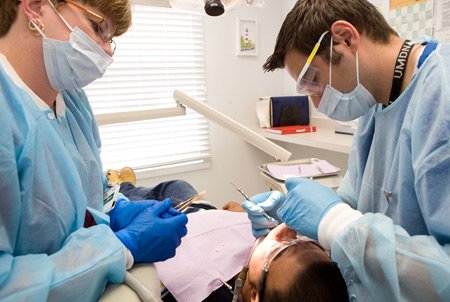Dental Effluent Guidelines

The EPA has pretreatment standards to reduce discharges of mercury from dental offices into publicly owned treatment works(POTWs). The Dental Office Category regulation is codified at 40 CFR Part 441.
Dental offices discharge mercury present in amalgam used for fillings. Amalgam separators are a practical, affordable and readily available technology for capturing mercury and other metals before they are discharged into sewers that drain to POTWs. Once captured by a separator, mercury can be recycled.
Key Facts:
- Dental clinics are the main source of mercury discharges to POTWs.
- EPA estimates about 103,000 dental offices use or remove amalgam in the United States; almost all of these send their wastewater to POTWs.
- Dentists discharge approximately 5.1 tons of mercury each year to POTWs; most of this mercury is subsequently released to the environment.
Mercury-containing amalgam wastes may find their way into the environment when new fillings are placed or old mercury-containing fillings are drilled out and waste amalgam materials that are flushed into chair-side drains enter the wastewater stream. Mercury entering POTWs frequently partitions into the sludge, the solid material that remains after wastewater is treated. Mercury from waste amalgam therefore can make its way into the environment from the POTW through the incineration, landfilling, or land application of sludge or through surface water discharge.
Dental offices that place or remove amalgam must operate and maintain an amalgam separator and must not discharge scrap amalgam or use certain kinds of line cleaners. Existing and new sources must submit a one-time compliance report to their pretreatment Control Authority.
